Embed presentation
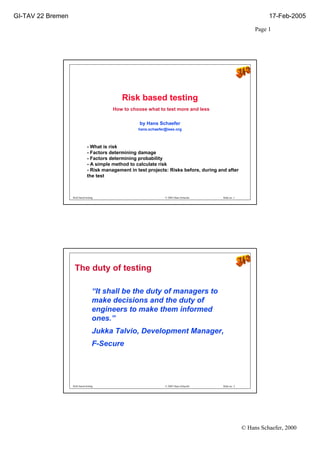
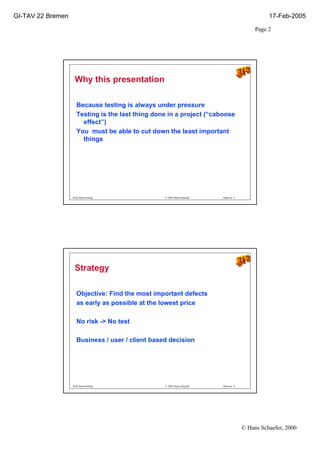
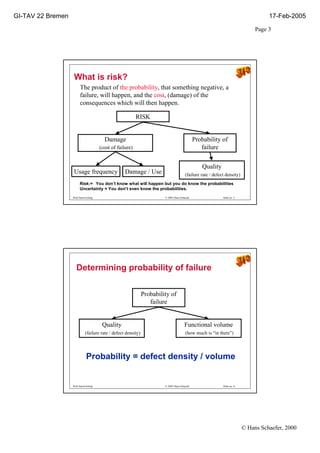
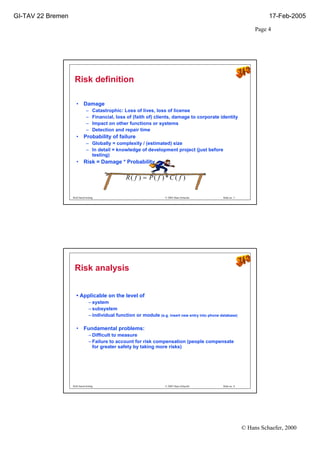
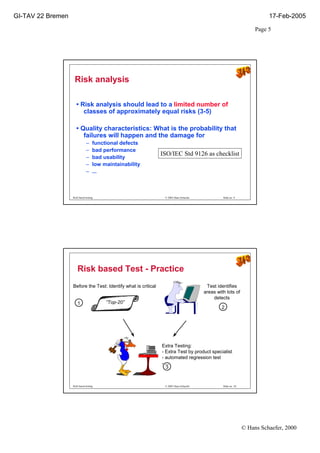
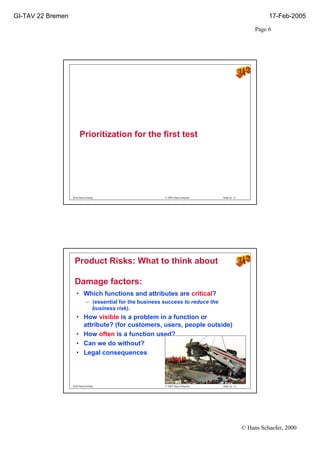
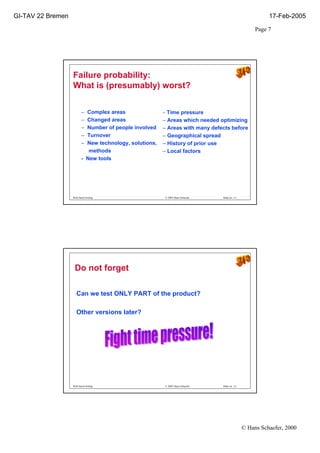
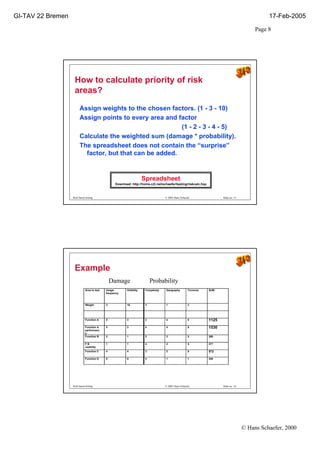
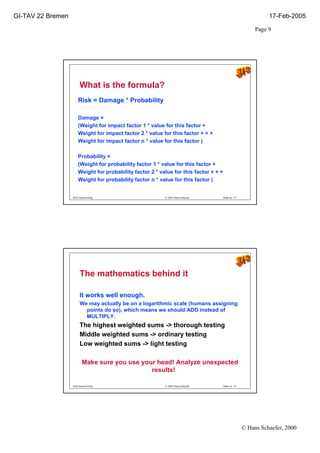
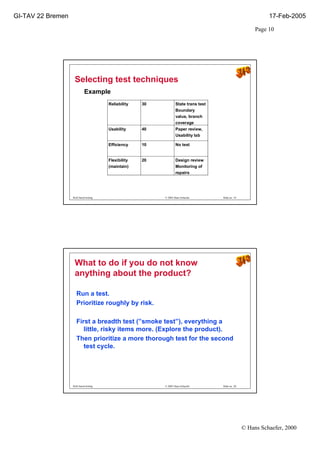
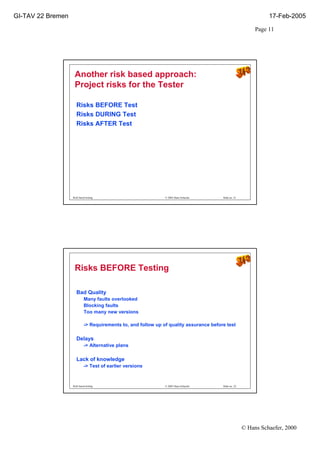
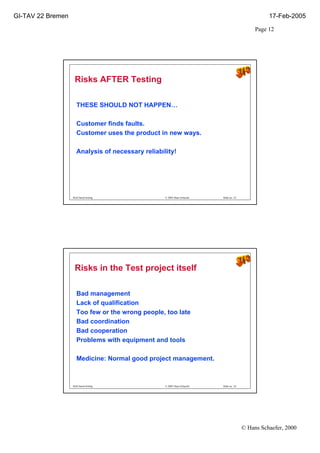
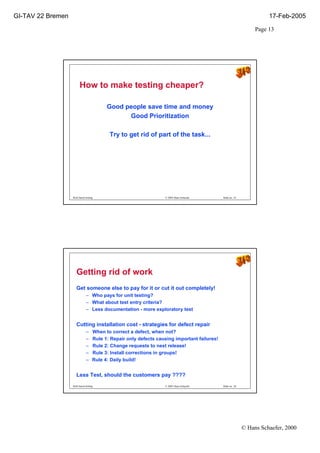

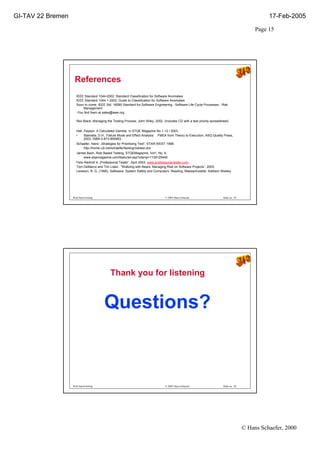

This document is a presentation on risk-based testing by Hans Schaefer. It discusses factors that determine risk such as damage and probability of failure. It provides a simple method to calculate risk as damage multiplied by probability. The presentation provides examples of identifying risks before, during, and after testing and prioritizing testing based on risk. It also discusses strategies for reducing testing costs such as good prioritization and removing unnecessary testing tasks.














